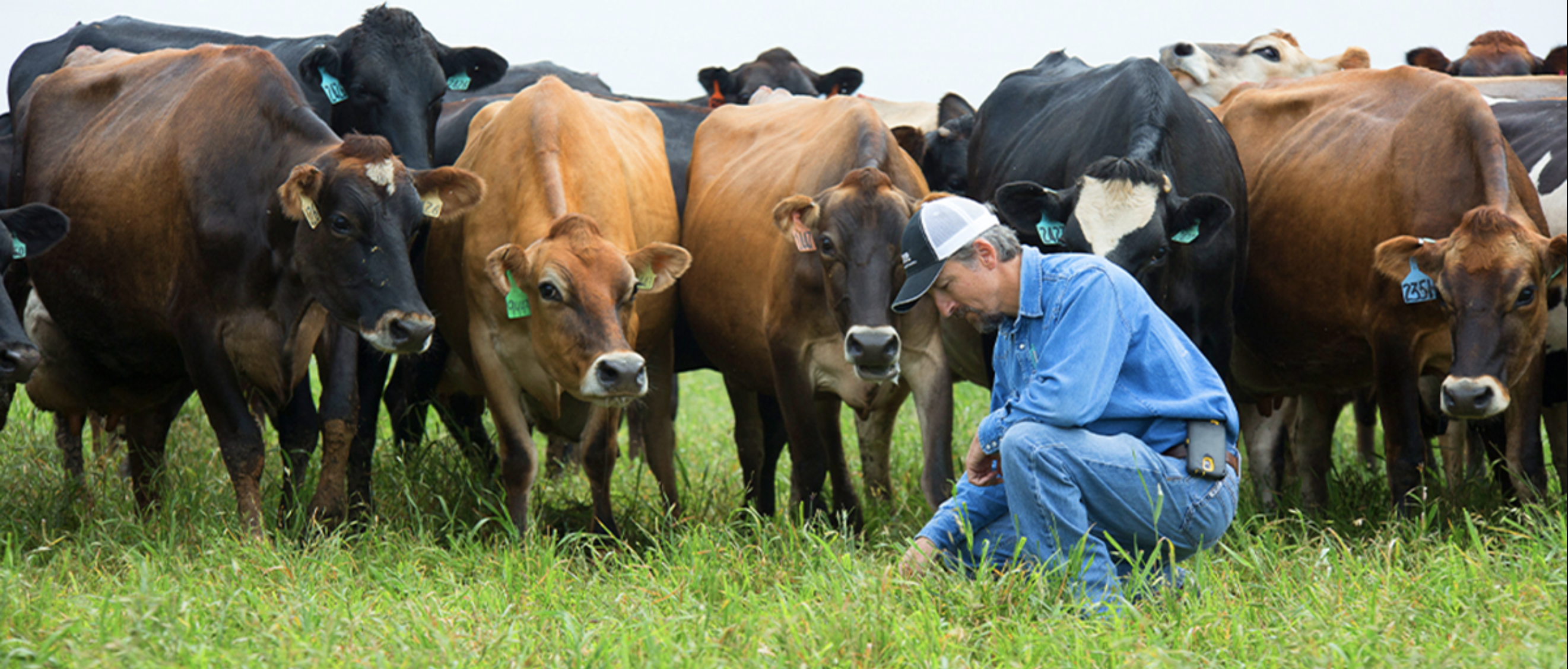The word “sustainability” has risen in popularity over the years. In the world of trendy marketing terms, it’s used to tout farm-to-table foods, eco-friendly packaging and more – but do we really know what it means?
As it turns out, dairy farmers have been practicing sustainability long before it became a buzzword.
Dairy farmers believe in providing responsibly produced, nutritious dairy foods that nourish our families and our communities. Since 95% of dairy farms are family-owned, dairy farmers are personally invested in protecting their land and animals – always looking for ways to operate more sustainably so they can pass the farm to the next generation.
Producing More With Less
Over the years, dairy farmers have made significant strides in doing more with less. A gallon of milk is now produced with 30% less water, 21% less land and a 19% smaller carbon footprint than it was in 2007. And this is all done with practices that are standard for most dairy farms, like:
- Reusing cow manure as crop fertilizer
- Conserving water – most dairy farms recycle water 3-5 times
- Using air filtration systems and specially formulated diets to reduce odor
- Following strict environmental standards set by government agencies
One great example of this is Sieto Mellema, eleventh-generation farmer and owner of Full Circle Jerseys, who designed his dairy to fit its name and operate more sustainably. That means growing crops to feed the cows, using cow manure to fertilize the crops and even buying back whey from the cheese factory to feed the cows – recycling that comes full circle.
“We live and breathe this every day,” said Sieto. “We care about the well-being of our cows, the well-being of our facilities and the area we live in. We live here, we drink the water.” And, of course, he adds, “We drink the milk.”
Healthy Cows, Healthy Milk
But to produce healthy milk, farmers must first have healthy cows. That’s why they go to great lengths to ensure their cows are well fed, are comfortable and receive quality care, with routine veterinary visits and innovative technologies. For instance, just like we have smartphones in our pockets, dairy farmers invest in robotics and monitoring collars – aka “Fitbits for cows” – for more efficient cow care.
Beyond sustainability on the farm, milk provides nearly 20% of the protein in American diets and over half of our calcium and vitamin D at about 25 cents per glass. Milk offers this big nutrient bang while only contributing 2% of the U.S. carbon footprint. And it all starts with the ways dairy farmers work to protect the environment.
Dairy farmers are also passionate about the communities they call home. They help combat hunger by providing milk and dairy foods to local food banks and raising funds through programs such as The Great American Milk Drive. Dairy farmers even partner with blood banks to help increase donations in an annual program called Passion for Pints.
Learn more about sustainable dairy.




